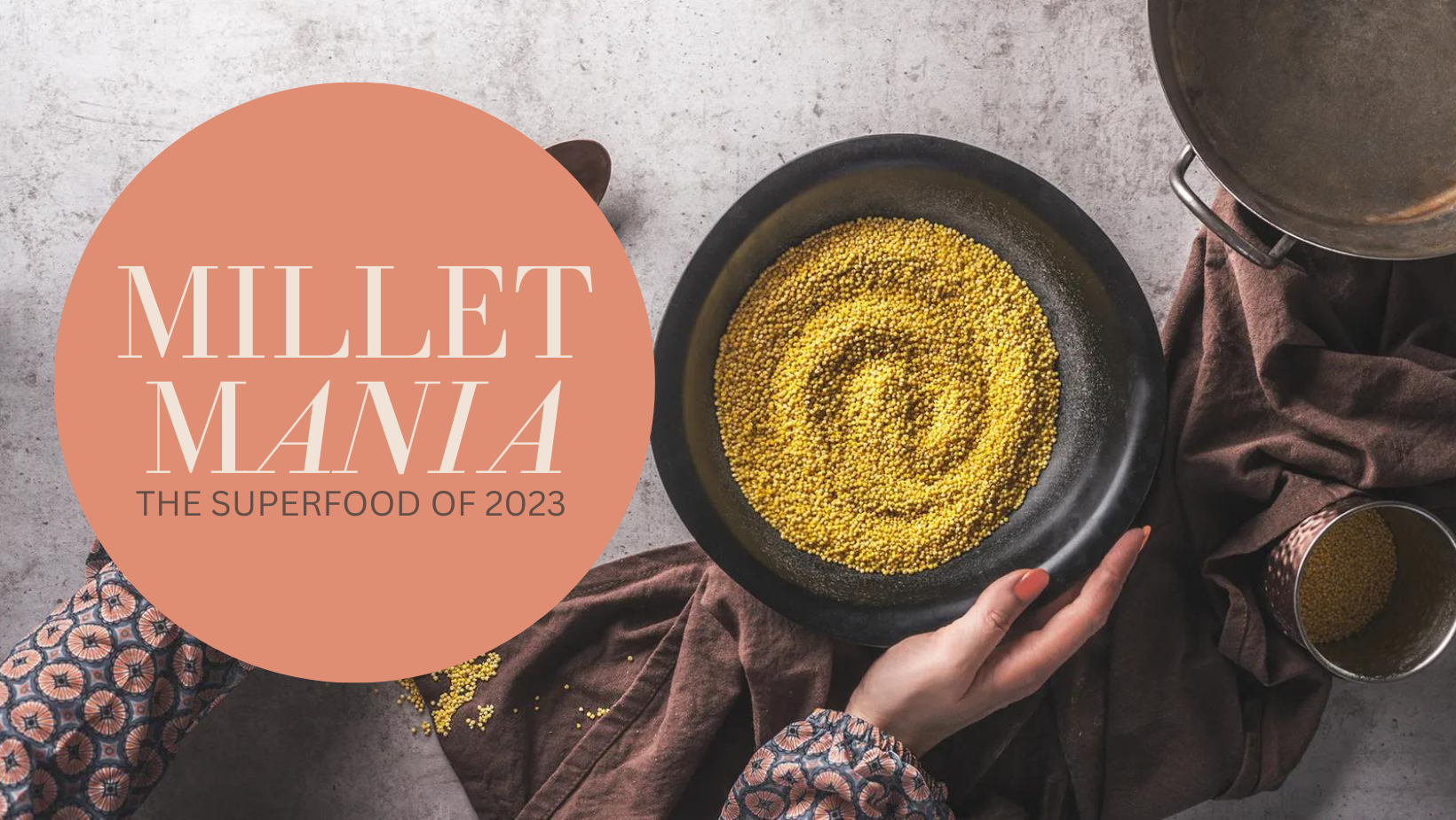
Millet Mania : The Superfood Of 2023

Millet Mania : The Superfood Of 2023
Millets are not new to India by any means. They have been around for time immemorial. In fact, in the 1940s and ’50s, millets were our country’s staple food instead of wheat and rice. Only after the green revolution in the ’60s did hybrid crops completely replace them. Over the years, millets had fallen out of favour with the gentry- they were seen as a poor pastoral man’s food. India was gravitating towards packed and polished rice and wheat.
But the wisdom of our ancestors could not be far.
It is only recently that millets have been receiving the love they so richly deserve. We have only begun to understand how it can help our bodies through our diet. Packed with proteins, fibres, vitamins, and minerals, millets have been proven to improve overall health.
Simple recipes created with millet have made the workforce of India satiated for hours. The same logic also applies to our lifestyles- millet helps with weight loss. Slowly releasing small quantities of glucose into our bloodstream, improving good health and boosting immunity by providing us with essential minerals and vitamins.
It is the nature of millet to make nutrients more bioavailable to our bodies.
United Nations declared the year 2023 as the International Year of Millets. At the announcement ceremony in December 2022, Qu Dongyu, the Director-General of the UN’s Food and Agriculture Organization, highlighted the nutritional value of millets and their invaluable role in tackling food security issues, empowering small farmers, and achieving sustainable development.
Millets are small grains – technically, seeds. The ingredient’s versatility can be used as a porridge and rice substitute. They can also be used as flour to prepare bread and other baked goods.
Across our country, nine forms of millet are cultivated. Sorghum, little millet, kodo millet, foxtail millet, finger millet, and barnyard millet are some of the types, to name a few. Although they share roughly the same nutritional profile, millets vary in colour, size, and texture. The proof of their historical popularity in India lies in the different names they are known as across various parts of the country.
Millets have much higher levels of iron and calcium than processed wheat and rice. Additionally, they are naturally gluten-free. They are also very fibrous, which makes them a good choice for those trying to manage insulin resistance or control blood sugar.
Millets are hardy grains; they grow without water, fertilizers, or pesticides. They are naturally non-GMO (Genetically Modified Organism) and pesticide free. The geography of our beautiful country, the variety of seasons, and the magic in the air seasonally produce this miracle crop. Even the least fertile lands have millets growing abundantly on them. Harvesting is done in short cycles, and these are often grown between major crop seasons to enrich the soil with its micronutrients.
Millets are not just great for our health but also good for the planet. It is not just another super food, but the conscious consumer’s contribution to a better planet.
Nutritionists and doctors are encouraging the consumption of millet to keep glucose levels in check, as they reduce high prolactin and even treat anaemia in people from lower income groups.
Smart homemakers are introducing a variety of fibrous millets in their family meals. We are just making your ordeal of looking for the ingredients, much much easier
Wholistic You hosts a wide range of millets procured from locally vetted and reputed brands. Noodles, cookies, pasta, ready to eat meals like porridge are available in various flavours- so that you can whip up something healthy, even when you are pressed for time.
This World Health Day, let us take the initiative never to forget; good health starts in the kitchen!



 Free Shipping on Order above ₹499/-
Free Shipping on Order above ₹499/- 